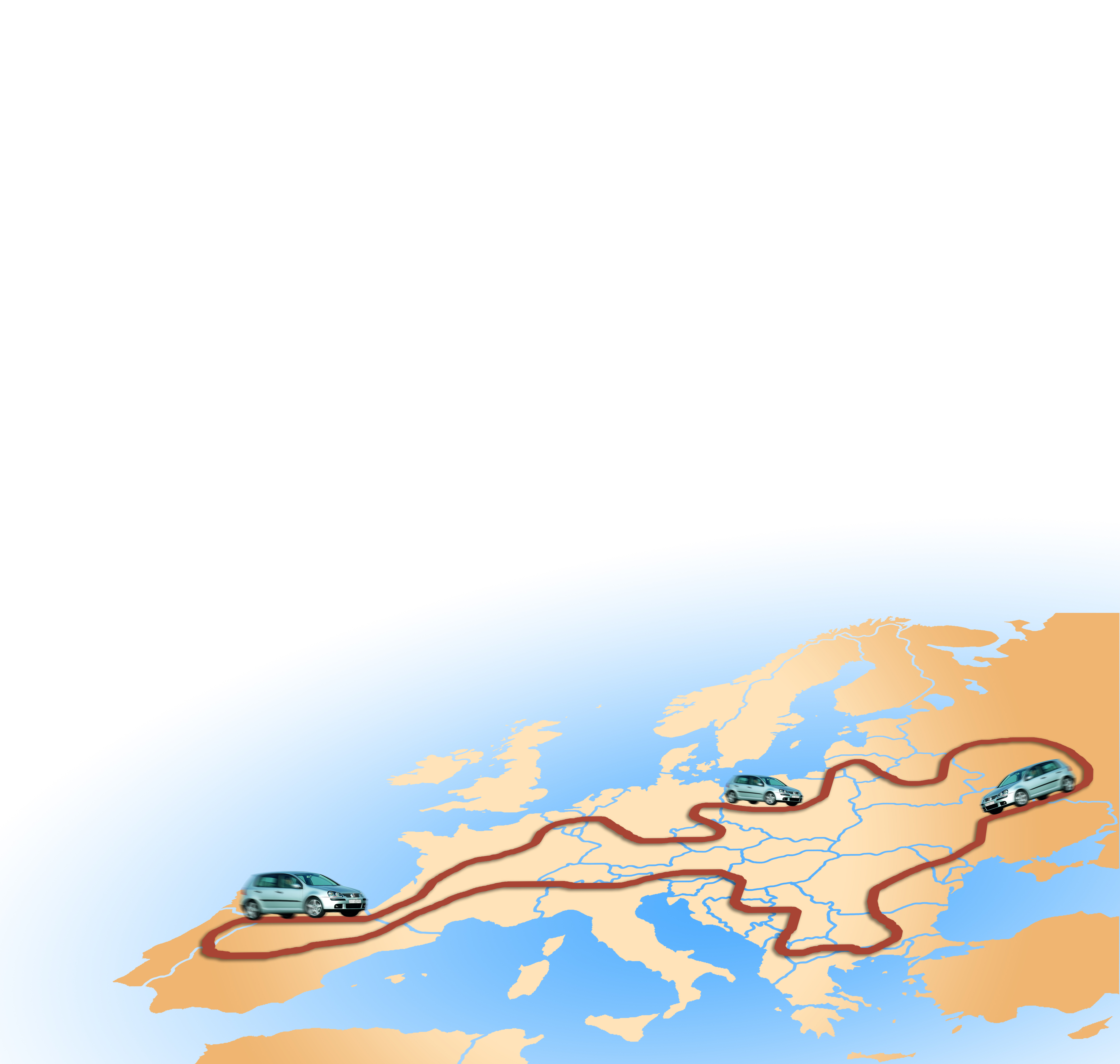
"Studies have showed that non-residents (that is, those driving outside their own countries) account for a disproportionately high number of road traffic accidents, particularly as regards speeding"
The logic supporting a cross-border enforcement Directive for the
Studies have showed that non-residents (that is, those driving outside their own countries) account for a disproportionately high number of road traffic accidents, particularly as regards speeding. However, sanctions imposed for offences committed by drivers on the territories of Member States in which they do not reside are most frequently not enforced. This relative impunity undermines the objectives of road safety as well as the legitimacy of these controls in the eyes of European citizens, given that both residents and non-residents must be treated equally. This issue is particularly sensitive due to many drivers' touristic activities or their central geographical situation; the proportion of offences committed by foreigners compared to the total of offences can for example be very high in certain coastal and tourist regions of France during the summer period.
The Commission intended to facilitate the enforcement of penalties related to speeding, drink-driving, the failure to wear a seatbelt or to stop at red lights - together, the four offences responsible for most fatalities in the EU.
The proposal established a procedure for exchanging information between Member States using an electronic data exchange network to identify the vehicle having committed an offence. Following identification, an offence notification would have been sent by the relevant authority to the holder of the registration certificate.
History
On 17 December 2008 the European Parliament adopted its first reading reinforcing the proposal. In particular, the Parliament inserted EU-wide road safety guidelines aimed at strengthening road safety control practices for the four main offences mentioned above by establishing minimum comparable criteria. The Parliament also inserted an Article obliging Member States and theIn addition, the Parliament completed the follow-up of road traffic infringements (recognition, transmission and enforcement of sanctions) by inserting new provisions concerning cases where financial penalty had not been paid. Framework Decision 2005/214/JHA should apply for penalties in a criminal law system; for the penalties imposed according to an administrative law system, the Member State of offence should transmit the final decision to the Member State of residence for enforcement. In order to take into account these specific national features, the Parliament proposed additional provisions allowing the penalty decision to be transmitted to and followed up by the authorities of the Member State of residence of the person who committed the offence.
The Parliament took on board a series of concerns voiced by the European Data Protection Supervisor (EDPS). It intended in particular to have a number of rights provided by Directive 95/45/EC to be safeguarded and enshrined in both the body of the Directive and the offence notification contained in the Annex.
Finally, Parliament aimed to reinforce the temporal perspective of the revision of the Directive by inserting into it an obligation for the EC to report on the Directive's implementation two years after it entered into force. This report would have been the basis for future amendments to the Directive to be proposed by the Commission, in particular on its effectiveness, the number of offences covered, the control practices and the standardisation of control equipment.
Legal basis
The proposal was blocked for two years by the Council due to discussion over the choice of the legal basis. Certain countries considered in particular that this proposal would have an impact on their repressive and criminal law system and that it did not respect their sovereignties in that respect. They preferred therefore a legal basis more in accordance with their concern in matters of police cooperation. The Treaty of Lisbon, which entered into force in 2009, gave rise to some additional possibilities which opened the way to making progress on this text.The Council concluded its first reading at the Transport Council of 3 December 2010 and substituted the former transport legal basis (Article 91) with the new Article 87(2) of the Treaty on police cooperation (covering the collection, storage, processing, analysis and exchange of information).
With the change of legal basis, major modifications were also made by the Council.
Firstly, the Council deleted any reference to enforcement procedures in the text by limiting the proposal to an exchange of data. It leaves the enforcement facultative, depending on the decisions of the different Member States, and in the respect of national procedures. An information letter now replaces the notification, for which a facultative template is proposed.
Secondly, this new legal basis had an effect on the geographical implementation of the Directive, as Article 87(2) is under the 'opt in' (UK and Ireland) and 'opt out' (Denmark) of certain countries. After three months of internal debate, the United Kingdom and Ireland decided not to opt in. That means therefore that British and Irish drivers will not be concerned by this Directive when committing offences abroad and that foreign drivers will benefit from impunity when driving in these two countries.
Concerning the exchange of data between Member States, Council made a clear choice to the use the EUCARIS system, which is an inter-governmental network used for the Prüm Treaty on the cooperation against organised crime and terrorism. The Prüm Treaty aims to fight cross-border illegal activities such as terrorism and organised crime by facilitating the exchange of personal data and vehicle registration numbers. Neither the EC nor the Parliament wished to pronounce themselves in favour of a specific data exchange system, considering that it should be a Community system determined at a later stage.
The Council also proposed to extend the scope by inserting four more infractions: driving under the influence of drugs; failure to wear a safety helmet; use of a forbidden lane; and illegal use of a cell phone or any other communications device while driving. In the case of, for example, using a cell phone while driving, Member States do not all equally recognise these infractions. For others, such as driving under the influence of drugs, the techniques are not yet considered by all Member States to be sufficient to allow proper enforcement of such offences.
The Council retained the obligation for the EC to provide information to drivers. As regards the guidelines for road safety, no reference was inserted into the proposal made by the Parliament. Finally, on the procedure of revision of the Directive, the Council adopted a much lighter version than the ones proposed by the Parliament by limiting the revision to the extension of the scope without any perspective on the enforcement of the sanctions.
Recent progress
The Council, after the political agreement of December 2010, transmitted its formal common position to the Parliament in March this year, leaving three months for Ireland and the United Kingdom to decide whether or not they would participate in the system created by the Directive.The second reading of Parliament began at the end of March and will be concluded during the first week of July, as the second reading is limited, for each institution, to four months. The TRAN committee will adopt its draft recommendation at the end of May and the final vote of the Parliament will be in Plenary at the beginning of July.
At the same time, Parliament and Council are negotiating within the framework of so-called 'trilogues' (which means negotiation meetings between the Council, Parliament and Commission) in order to try to reach a possible agreement on this proposal in parallel to this second reading. If no agreement is reached in second reading, the second reading of the Council will begin for four further months. It is after this new period that a third reading called Conciliation will begin, probably at the end of 2011 or beginning of 2012..
The main elements to be negotiated between Parliament and Council are: a new technical annex which replaces the reference to the Decision 2008/616/JHA on the Prüm Treaty; the choice of the EUCARIS system (which is not contested by Parliament, but the possibility to change it in the future should be kept open); the reinforcement or not of the obligation of transmission of the information letter following the exchange of data; whether the reinforcement or not of the reporting obligations to be respected by Member States should be reinforced on the timing and on the content; the reintroduction of Parliament's first reading concerning personal data protection; reinforcement of the obligation to inform drivers or not, in line with the first reading of the Parliament; and reinforcement and extension of the revision of the Directive to other matters than the scope in order to allow the possibility to come back with more ambitious proposals in the future (therefore, the European Parliament proposes to insert a new annex into the Directive containing the main elements of the road safety guidelines proposed in its first reading as well as elements for enforcement procedures, the harmonisation of traffic rules and the control procedures).












